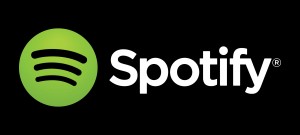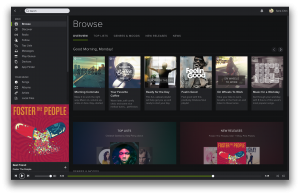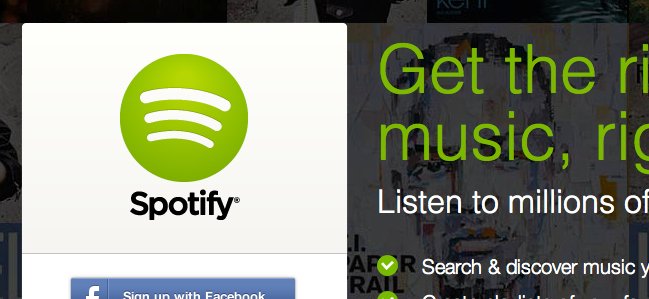The Spotify Lover’s Delimma
 As a music lover, I can’t think of a better time to be alive.
As a music lover, I can’t think of a better time to be alive.
Right now, my iTunes library contains nearly every song I’ve ever owned. Other than a few CDs that never got ripped, virtually any track I’ve bought, from almost any source, can be found on my computer in an easy-to-search, easy-to-locate catalog of music.
But what about the tracks I never bought? What happens if Neil Diamond’s “Sweet Caroline” gets stuck in my head because one of my friends played it at open mic night? I’ve never bought a Neil Diamond CD so it’s not in my owned music. Fortunately, the Internet has me covered Spotify, Rdio, YouTube, etc. all provide legitimate, legal sources where I can listen to the song immediately, for free and with little more than a mouse click.
Clearly, today is the golden age of the music fan.
But is it that simple? While, as a music fan, I love Spotify, its competitors and alternatives, it definitely comes at a cost. Though Spotify has done more than any anti-piracy effort to reduce copyright infringement and music piracy, musicians aren’t exactly singing its praises either.
What looked to be a win-win for fans and artists alike is looking less so and despite Spotify promises that things will improve, artists haven’t relented in their attack. Meanwhile, the company still hasn’t turned a profit and is reportedly gearing up for an IPO, which has further stoked flames.
So what is a music lover to do? As musicians go to war with many of the great new choices the Web has provided, it’s the fan that’s often stuck in the middle.
The Appeal of Spotify
 The appeal of Spotify (and other, similar, services) is fairly easy to explain. Spotify has a checklist that makes it a music-lovers dream:
The appeal of Spotify (and other, similar, services) is fairly easy to explain. Spotify has a checklist that makes it a music-lovers dream:
- Legitimate: Blessed by the licensing bodies, Spotify is a legal service.
- Free (or Cheap): A free, ad-supported account is available though a $10 per month premium account is well worth it for many.
- Complete: A few holdouts aside, nearly every song I can think of it in Spotify.
- Instant: No downloading, no waiting, just a search, a click and a song.
- Ubiquitous: Spotify is available on mobile devices and virtually any Internet-connected PC through a Web Player.
In short, Spotify is a music collection that those who grew up with physical media could have only dreamed up. To go from a world where one had to pay for the privilege of buying just a few CDs or records per year to one where millions of songs are available for free with the click of a mouse seems more like science fiction.
The same or similar can be said for other services like Beats, Pandora and even watching music videos on YouTube. Right now, music is more accessible than ever and that makes it a golden age for music fans. Unfortunately though, many musicians don’t seem to be sharing that sentiment and, in some cases at least, for good reason.
The War with Musicians
The conflict between Spotify and musicians is well-documented. Many musicians have posted royalty statements showing negligible royalties being paid to them for Spotify streams.
While there has been a push to blame this on record labels, it seems to also be true for independent artists, such as Zoe Keating, who sees the lion’s share of her royalties come from a relatively small number of digital downloads, rather than streaming.
Whether or not the access model is the future of music is up for debate, but it isn’t paying the bills for musicians today and that does represent a dilemma.
I know many musicians, including some that are relatively famous, but most, if not all, are struggling to make ends meet. If I want the artists I love to be able to continue making music, they have to be continue making a living. Most of those who make their living through music have a diverse income that includes touring, merchandise, recorded music, streaming and other activities such as music lessons, custom music and more.
Many more, however, have “real” jobs that they do eight hours a day or more and use that to pay for their music.
Between the never-ending slide of recorded music, the rising costs of touring, which is putting a deep squeeze on many bands, it’s getting harder and harder to be a musician and make a living.
Spotify’s long-term promises mean little to musicians that are struggling today and that puts fans like me in a difficult position.
The Meaning of “Legitimate”
The crux of the dilemma is what does it mean for a service to be “legitimate”. While on the surface it means that the service is legal and there is no risk in using it. Services like Grooveshark cary little to no practical legal risk for users and, even if one is a heavy music pirate on traditional file sharing sites, the odds of facing legal repercussions are slim to none, especially since the RIAA ended its campaign against individual file sharers.
To me, and others like me, legitimate has never been about freedom from repercussions, which can be trivially avoided, but rather, an ethical decision to support the musicians I love and that enrich my life. If Spotify can’t do that, then it’s not a legitimate service in the sense that I want it to be.
But that is the dichotomy of the music world right now. Music fans live in a time of plenty, a digital musical feast of endless proportions while musicians have seen a key revenue stream be destroyed while, despite promises, others have not been able to rise and fill the gaps.
While some artists have found success, such as Jonathan Coulton, but the successes are clearly outweighed by an industry that is struggling along with 45% fewer people working as musicians than just twelve years ago.
If my personal goal is to stem this tide and help the musicians I love, do I take my $120 and give it to Spotify, hoping that their gamble and their investment in music pays off down the road? Or do I buy merchandise, CDs, downloads, etc. from the artists I love in hope of helping them today?
Fortunately, the two are not mutually exclusive. I can and do both. But money I spend every year on recorded music puts me well above the $64 per year that the average music buyer spent in 1999, right as the recorded music industry peaked.
For someone in that average range, a premium Spotify account is already 2x the amount of money they would normally have spent. But if someone is willing to spend $120 per year, is Spotify the best way?
That’s the nature of the Spotify dilemma, wanting to both enjoy the smorgasbord of music that the Web provides, while wanting to ensure that musicians are treated fairly and can keep the music playing for a long time to come.
Bottom Line
To be clear, I don’t have any answers, easy or otherwise, to this problem. I love and enjoy Spotify, it is my favorite music service, but I recognize it isn’t enough, right now at least, to sustain the industry I love.
For all of the talk about the need to embrace new business models or to increase access to copyrighted works, the music industry has definitely made its efforts. Right now there exists a free, unlimited, music streaming service that has nearly every song on the planet. It’s a tough offer to beat and it’s tough to see why anyone continues to pirate musical content.
The music industry today looks a lot different than the one was shaken by Napster in 1999 and it doesn’t get much credit for its efforts.
However, preserving and growing the music industry isn’t going to just be an effort made by labels, musicians and others in the field. Fans have to make an effort to. Part of that is the need to open our wallets again and be ready to support those who enrich our lives, but another part of it is finding the best ways to spend that money and also our time.
All of the innovation in technology and music is useless if none of the rewards for creating the art get to the people who make it then the future will look bleak for the music industry, no matter what new technology may be on the horizon.
Technology can bring music to ears but, by itself, can’t put food on plates for musicians.
Want to Reuse or Republish this Content?
If you want to feature this article in your site, classroom or elsewhere, just let us know! We usually grant permission within 24 hours.
